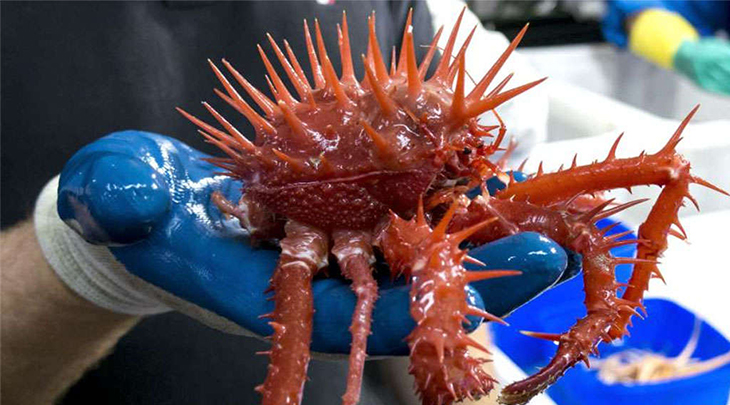By: Josh Davis/IFL Science We all know that the deep sea is full of some seriously strange-looking critters, many of which wouldn’t look out of place in your darkest nightmares. Well, a recent Australian expedition run by CSIRO on the research vessel Investigator did not disappoint.
During their voyage from Tasmania to the Coral Sea, the scientists trawled the depths of the ocean and came up trumps with some truly bizarre animals. This is actually the first time researchers have had a chance to peek into the dark waters along the east coast. As they mapped the ocean floor, they picked up over 1,000 different marine species along the way, up to a third of which are thought to be new to science.
Here are some of the weirdest creatures they found.
Corallimorpharia

Rob Zugaro/CSIRO/Museums Victoria
While many species have done away with the need for eyes, this one is even stranger than that, as they don’t even have any indication of where their eyes used to be. Known officially as the faceless cusk eel (Typhlonus nasus), this one was found 4,000 meters (13,100 feet) below the surface.
Spikey crabs

Asher Flatt
There are plenty of crustaceans that call the deep sea home, including this spiny red crab. Technically not a true crab, it is more closely related to hermit crabs, but has traded in its smooth shell for a decidedly medieval-looking rack of spikes instead.
Sea spiders

Robert Zugaro/CSIRO
These are not really spiders at all, but a whole lot weirder. With no specific organs for respiration or digestion and with legs that are little more than hollow straws, some of the sea spider specimens collected on the expedition certainly question what it really means to be a living animal.
Carnivorous sponges

Karen Gowlett-Holmes
These things go to show that you don’t need to go to outer space to find aliens. These carnivorous sponges produce pure silicon (glass) spines to catch their prey. Since each of their cells functions in effect as stem cells, and so can turn into any other type of cell in the sponge’s body, once prey is caught by the spines, new cells can migrate to the unlucky victim and digest the crustacean.
Dragonfish

Jérôme Mallefet
The deep would not be the deep without a fluorescent beastie to feast your eyes upon. The dragon fish fill this slot, glowing and attracting unsuspecting prey right into the danger zone.
And finally, the one you’ve all been waiting for…
Peanut worm

Robert Zugaro/CSIRO/Museums Victoria
.I think we can all agree it gives the actual penis worm a run for its money on which deserves the name more. Yet those who first discovered this rather phallic-looking creature (Sipuncula) decided to name it after its apparent resemblance to a peanut when it contracts its head inwards when faced with a predator.




